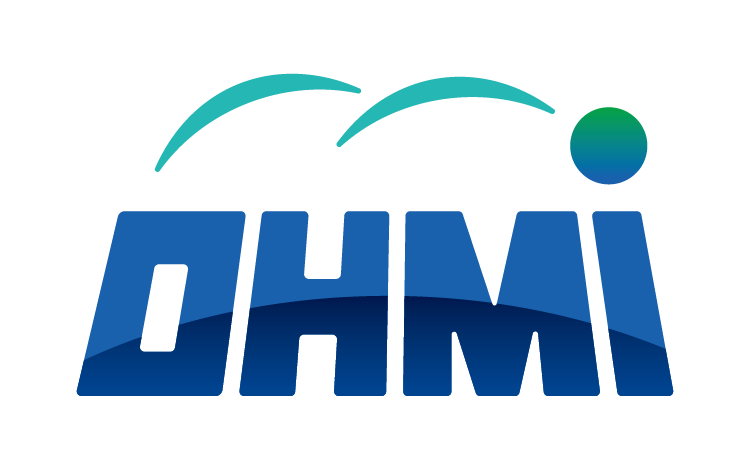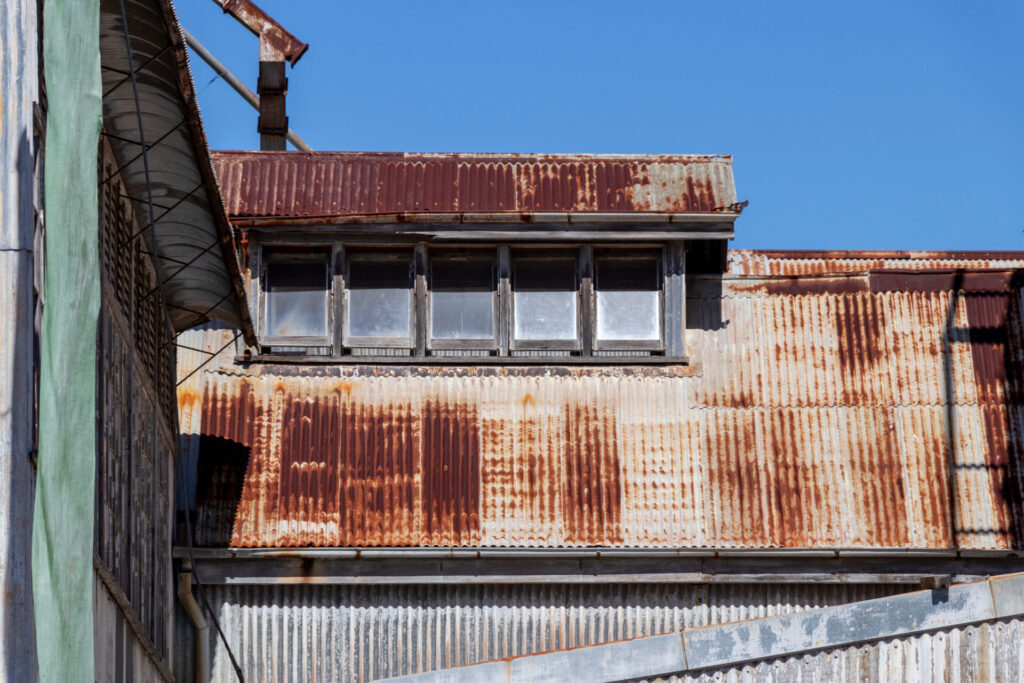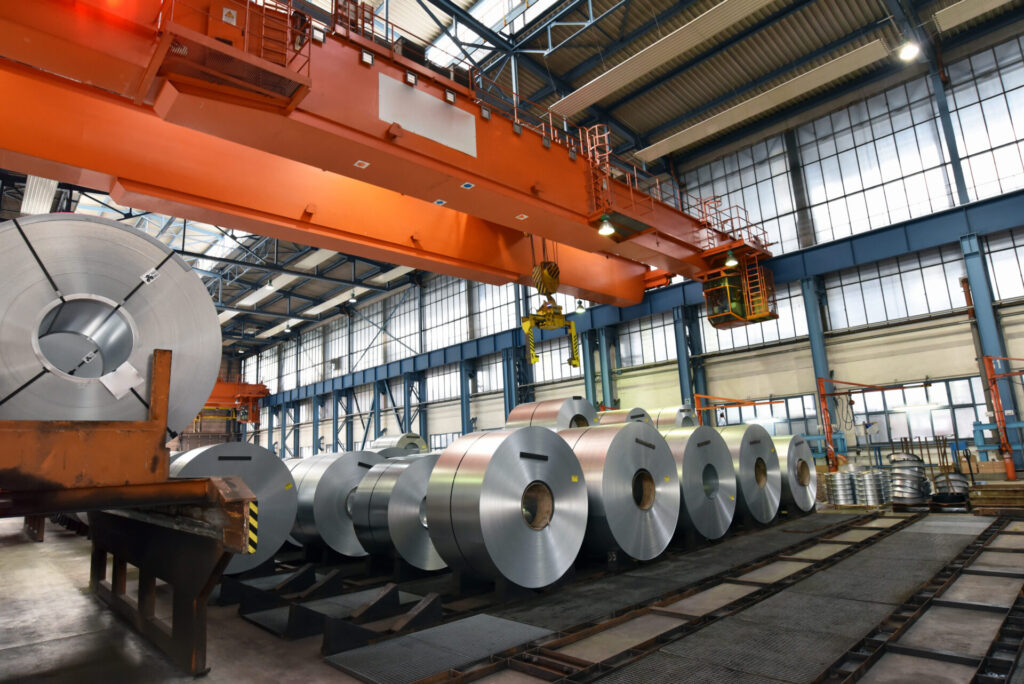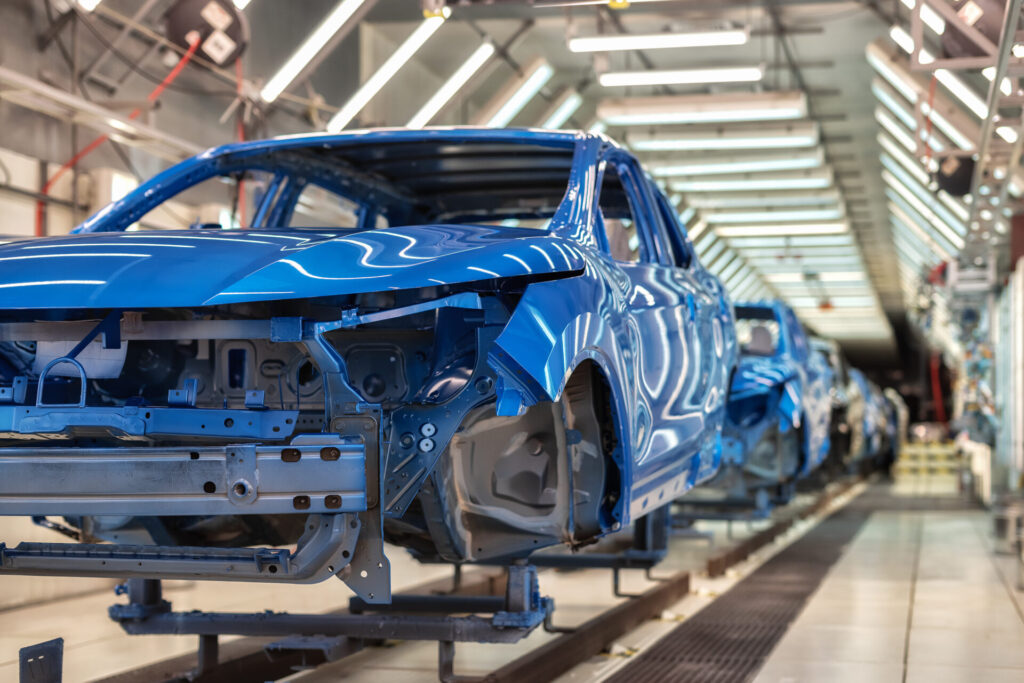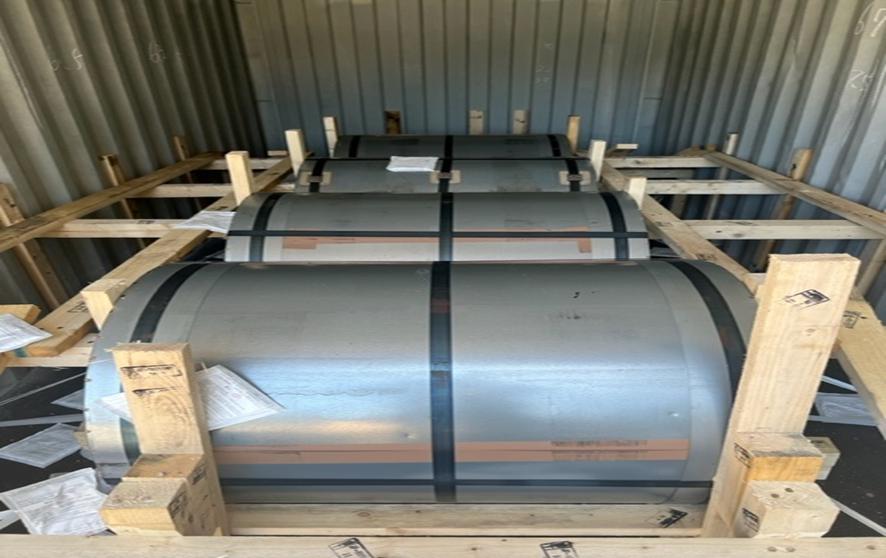Bringing more rust-resistant,
insulating steel sheets to India
Episode 01
Delivering corrosion-resistant steel sheets
to Indian factory buildings
Early in the 21st century, galvanized steel sheets were still being used on factory buildings in India.These can sometimes still be seen in Japan. Silver colored steel sheets with surfaces that look like blooming flowers. Some are covered in brown rust and even have holes.
Clearly, they have succumbed to the rain and started to rust.
These sheets gave us the idea of introducing highly rust-resistant Japanese steel sheets to customers in India.These aluminum-plated steel sheets are highly corrosion and weather resistant, and offer superior heat shielding performance. Although they are a bit expensive, we persisted in explaining their superiority, leading to customers using them in their factory roofs and walls.
It proved to be a difficult task, however.These were the first steel sheets the local contractor had ever used, and they lacked sufficient knowledge for using the sheets in construction. To help, we sent OHMI representatives and engineers from Japan to oversee the site and provide construction advice. Instead of simply delivering products in a robotic fashion, one of our strengths is the ability to support customers so they can get the most out of products.
Also, India is a very hot country.To help alleviate some of that heat, we introduced a heat-shielding sandwich panel.Urethane thermal insulation is sandwiched between two colored Galvalume steel sheets, resulting in heat insulation, strength, fire resistance, and durability.The customer saw the product’s value as an advanced version of aluminum-plated steel sheets, so they placed an order.
Aluminum-plated steel sheets were used on the roof and outer walls of a steel-frame assembly plant built in Haryana, India. (*1: The sandwich panels were used in the office building at the Steel Service Center. *2: The client praised the comfort in the office and energy-saving performance of the product.)
A local OHMI representative and a saleswoman from Japan stayed at the site for nearly three weeks to help take on a variety of difficult challenges in the construction of the office building. On the final day, a commemorative photo was snapped with on-site staff. The saleswoman is smiling from ear to ear.
Thanks to unprecedented follow-through from local delivery to construction, the client was very happy with the results.It was a memorable, successful experience that formed a lasting impression of OHMI.
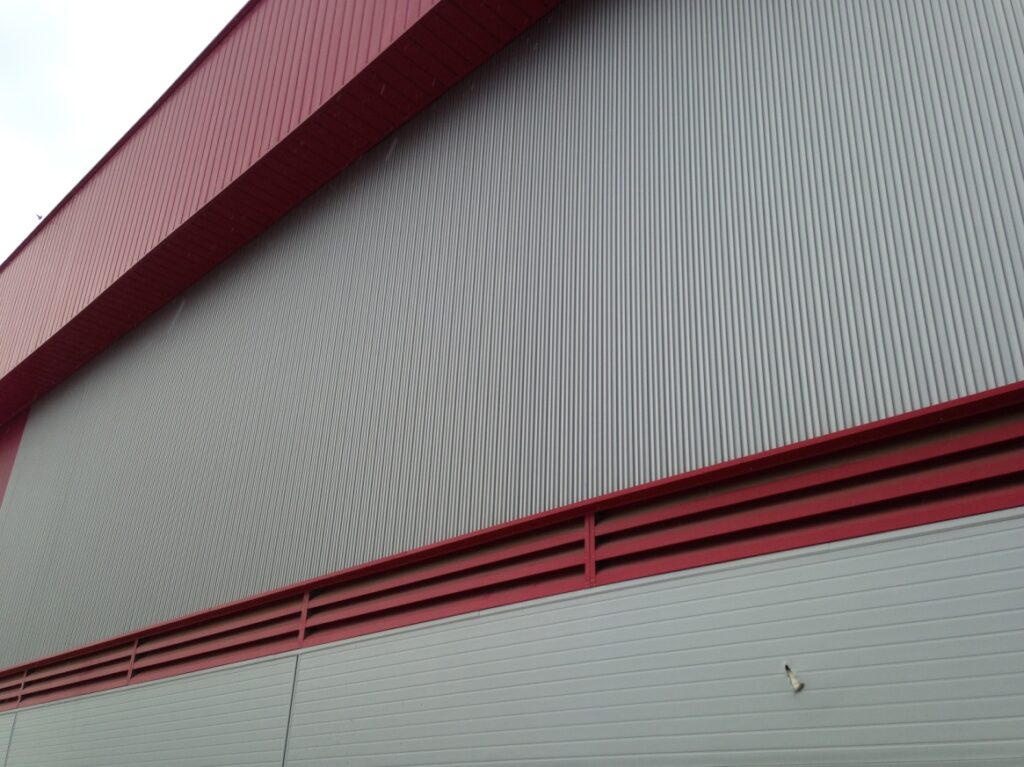
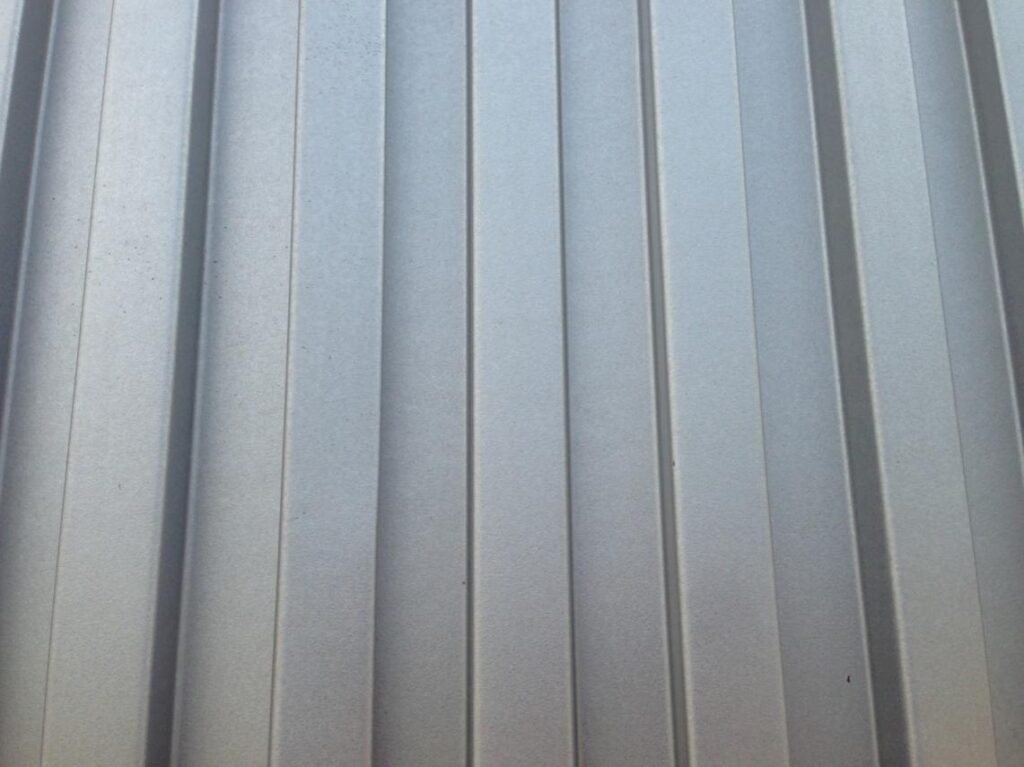

Delivering steel sheets
to local Asian automobile manufacturers
Episode 02
Successfully delivering Japanese steel sheets
to an Asian automobile manufacturer after years of efforts
More than 20 years ago, a local Asian automobile manufacturer, with whom we had a long relationship, asked us for help as we have solid track record in exporting steel (including automotive parts subcontracting work) from Japan.
They were new to manufacturing passenger cars, and urgently needed to improve rigidity and corrosion resistance, so they were hoping we could do something to help in procuring steel from Japan. Because we had conventionally been focused on housing, we lacked sufficient knowledge of automotive steel sheets. We also did not have an engineering department, so we decided to ask for the support of a Japanese steel manufacturer. They were initially hesitant about exporting steel sheets for automobiles, as they would bear the responsibility as a supplier, however, they were moved by our fervent requests, so they sent an engineer to talk directly with the local automobile manufacturer.
The situation only grew more difficult thereafter. First of all, the engineer had to visit the local factory time and time again to clarify the issues the auto manufacturer faced, then provide feedback to Japan. From Japan, specific points of improvement were provided in the form of proposing materials, which were then delivered on a trial basis. In some cases, two or three tests were required, resulting in a trial and error basis over the course of two or three years.
In the end, we successfully delivered automotive steel sheets that the customer was satisfied with, helping achieve the desired automobile performance improvements. The steel sheets are still held in high regard and continue to be used today. Our sincere engagement with a task and tenaciousness have been highly praised by both our customers and Japanese steel manufacturers, helping our business grow significantly, and are qualities that we regard as our most cherished assets.
Regular shipping from Japan to India
thanks to Ohmi’s strengths
Episode 03
Ohmi solves difficult logistics issues
One issue that we faced along with a Japanese steel manufacturer was the issue of logistics from Japan to India in our efforts to export and increase shipments of steel to India.
Because a large quantity of steel was exported from Japanese steel manufacturers to East Asian countries and North America in the 1990s, each month steel would be loaded onto conventional vessels (bulk carriers) at the quays of steel plants and transported directly to the destination ports.Unfortunately, quantities exported to India were low, so steel was carried from plants to public ports in Kobe or Yokohama by truck or barge where they would then be loaded onto containers for shipping. This transportation system was troublesome and costly. A few dozen tons was not a problem, but when it ran into the thousands of tons, the attendant labor would balloon out of proportion, impacting cost competitiveness. Arranging for containers, providing loading instructions, ensuring sufficient container ship space, etc., was a tremendous struggle for us.
It ended up creating the exact opposite effect we wanted; to provide quality, low-cost steel to Indian customers. We wondered if we could arrange for direct shipments from steel plant ports to India, and began negotiations with a number of ship companies whose main cargo is steel.
Initially they refused point blank, saying there was nothing they could do.
“You think you can send regular, monthly consolidated shipments of steel to India? Ridiculous!”
They coldly asked how we could possibly guarantee such a venture.
We then began to convince them. We explained the customer’s situation, introduced them to the customer, and showed that they needed a monthly shipment of steel. We also showed that demand would grow in the future, and that the quantity would also increase, as well as past track records, etc., visiting shipping company offices again and again so that they would take us seriously. Although it took two years, finally, one company listened to us and regular conventional shipping was possible from around 2000. Even today, shipments from Japanese steel plants to India are made nearly every month.
